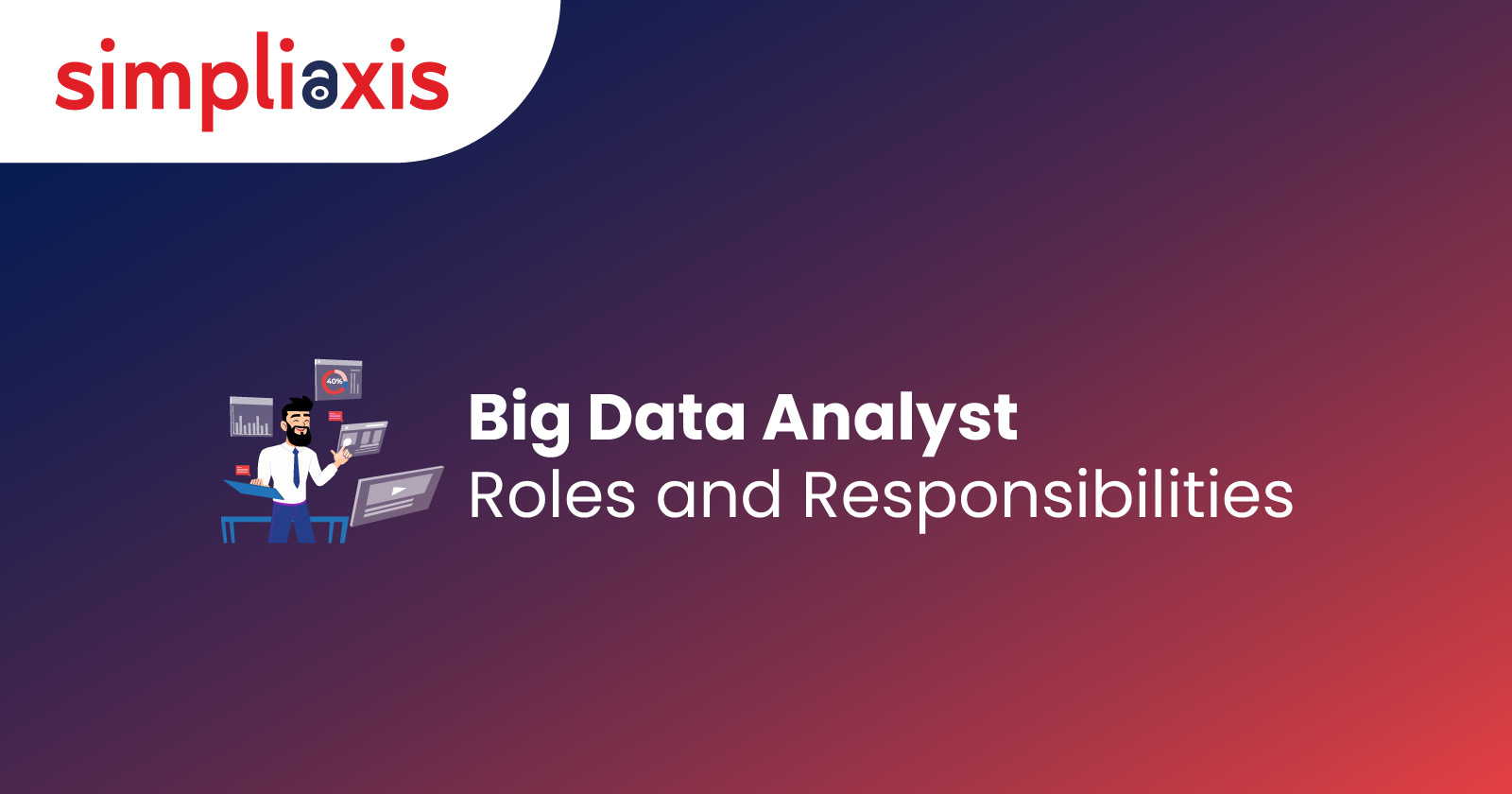In today's digital age, the proliferation of data has transformed the landscape of business operations and decision-making. Amidst this data deluge, the role of Big Data Analysts has emerged as pivotal in extracting actionable insights from vast and disparate datasets. But what exactly does "Big Data Analytics" entail, and who are these analysts tasked with deciphering its complexities? In this blog, we delve into the realm of Big Data Analytics, exploring its significance, methodologies, and the crucial roles and responsibilities that define the domain of Big Data Analysts. Join us on a journey to unravel the intricacies of this dynamic field and understand the indispensable role of Big Data Analysts in today's data-driven world
What does "Big Data Analytics" mean?
Big Data analytics is a method that involves the process of analysing massive amounts of data, often known as Big Data. This massive amount of data originates from many sources, such as social media platforms, movies, digital photographs, sensors, and records of financial transactions. The analysis of all of this data is being done to discover patterns and relationships that would not otherwise be visible, as well as gain useful insights into the users who provided the data. As a result, businesses may obtain a competitive advantage over their rivals and improve the quality of their business decisions.
Traditional corporate systems cannot access enormous volumes of transaction data and other data sources. However, Big Data analytics makes this information available to data scientists and other users so that they may analyse it. Traditional systems may fall short because they can't analyze as many data sources as newer ones.
Big Data analysis uses complex software programs, yet the unstructured data employed in it may not be a good fit for typical data warehouses. It's possible that standard data warehousing won't work well for Big Data because it has such demanding processing requirements. As a direct consequence, brand-new settings and technologies for data analytics, such as Big data Hadoop, MapReduce, and NoSQL databases, have come into existence. These technologies include a framework for open-source software to process enormous data sets across multiple clustered servers.
Who is a Big Data Analyst?
A person who studies, analyses and reports on large amounts of data an organization has saved and preserved is known as a Big Data analyst.
Big Data analysts have jobs and skill sets comparable to those of data analysts, but their primary focus is on Big Data analytics rather than traditional data analysis.
Big Data analysts go through vast amounts of raw and unstructured data using both human methods and automated Big Data analysis and analytics software to discover useful information such as business insights, intelligence, and other pertinent details.
A solid understanding of data mining and extraction methods is often required to be considered a Big Data analyst. Other essential qualifications include familiarity with Big Data principles, expertise in database query languages, and the ability to use Big Data analytics tools. In most cases, a Big Data analyst will work with data scientists, database developers and administrators, and a management team responsible for determining the purpose and scope of Big Data analysis.
Big Data Analyst Roles and Responsibilities
Now that we have an idea of who a Big Data Analyst is, let's take a look at the key responsibilities that come with the position:
The act of gathering and organizing data from a variety of sources, as well as cleaning, organising, processing, and analysing the collected data in order to derive useful insights and information.
This project aims to find additional data sources and develop improved methods for data mining, analysis, and reporting.
To construct SQL queries to extract data from the data warehouse.
For analysis purposes, establish data definitions for brand new database files or make modifications to existing ones.
Present the findings in reports (in table, chart, or graph format) to aid the management team in making choices.
Keeping an eye on how well data mining technologies are doing and fixing any problems that crop up along the way, using tools of statistical analysis to discover and analyse consumer data to track patterns of correlation and trend in massive data sets.
- Analysis tasks that are performed regularly to support the day-to-day operations of a firm and the decision-making process.
- Collaborate with data scientists to develop cutting-edge analytical tools.
- Work together with both the IT team and the business management team to accomplish your company's goals.
- Data importation and collection, as well as data cleaning, conversion, and analysis to gain insights and draw conclusions.
- Presenting data in the forms of graphs, charts, and tables, in addition to the design and development of relational databases for the purpose of data collection
- Conduct research on data mining products, protocols, services, and standards in order to lend support to procurement and development initiatives. Recommendations should result from this research.
- Maintain constant vigilance over the operation of the data mining system and be prepared to address any problems that crop up.
- By simplifying complicated issues into more manageable frameworks, you can design, implement, and maintain cutting-edge analytic systems smoothly.
- Conduct in-depth analyses of large data sets to spot patterns and chances for expansion.
- Data sets require evaluating organisational strategies, providing source-to-target mappings, and producing information model specification documents.
- Create reports that adhere to best practices by employing data mining, analysis, and visualization.
- Evaluating internal systems in terms of their efficiency, faults, and inaccuracies, as well as designing and maintaining rules for the management, processing, and cleansing of data
- Engage in face-to-face communication with management and end-users in order to collect needs, share progress updates, and forge working relationships
When dealing with extensive data sets, monitoring patterns, trends, and correlations is important.
Data Analysts’ roles and responsibilities include preparing succinct data reports and visualizations to help management make decisions.
- Maintain close working relationships with the IT team members and the data scientists to determine and accomplish organizational objectives.
- If required, assist the data scientist in developing new analytical tools and procedures.
- Developing new data systems and databases, maintaining existing ones and fixing any coding mistakes or other data-related problems that may arise.
- Data mining involves extracting data from primary and secondary sources and organizing it into formats that are convenient for both humans and machines.
- Utilizing statistical tools in order to understand data sets, with an emphasis on trends and patterns that could potentially be useful for diagnostic and predictive analytics initiatives.
- Developing reports for the executive leadership of the organisation that make use of pertinent data in order to explain trends, patterns, and projections effectively.
- Working in tandem with software developers, hardware engineers, and company executives to investigate potential areas for process improvement, suggest modifications to existing infrastructure, and draught data governance policies.
- Creating the relevant documentation so stakeholders can comprehend the stages of the data analysis process and, if necessary, reproduce or replicate the study is one of the tasks involved in this project.
Also, Check:Big Data Trends
Other key Big Data Analyst roles and responsibilities
Finding out the organization's overall objective is a data analyst's first and most crucial task. To do this, Big Data Analyst roles and responsibilities include working along with:
- Data Mining
Data mining is a method that uses mathematical and computational algorithms to structure raw data and formulate or recognise a variety of patterns hidden within the data. This process can be thought of as "pattern recognition." It contributes to the production of fresh data as well as the identification of new insights. It is common practice for data analysts to be responsible for data mining and collection. In order to carry out research, one of the most significant responsibilities of any Data Analyst is to either get data from the database maintained by the organisation or to extract it from sources located outside of the company.
- Purification of the Data
The first phase in the entire data preparation process is analysing, detecting, and fixing jumbled, raw data. This is the first step. When doing an analysis of the data held by an organisation in order to arrive at strategic conclusions, data analysts need to begin with a comprehensive data cleansing procedure. It's as easy as that solid analysis depends on having clean data to work with. Either eliminating data from your set that has the potential to distort your analysis or transforming all of your data into a uniform format is what is meant by "cleaning."
- Using specialized computer software for Data Analysis
Every Data Analyst needs to be proficient in this particular function. The practice of extracting facts from data in order to provide an answer to a particular query is known as data analytics.
The method entails using analytic and logical reasoning for each component of the data that is presented for examination. Statistical tools are utilised in the processes of data analysis and interpretation.
- Finding Out the Current Trends and Patterns
Because of the nature of their work, data analysts spend a significant amount of time finding trends, correlations, and patterns in massive datasets. The direction of trends is also quite important. Data analysts search for patterns in the short term as well as the long term
Big Data Analyst Roles and Responsibilities on a daily and monthly basis
- Collaborate closely with Project Managers to understand their analytical needs and concentrate on meeting those needs. This should include locating important indicators and KPIs and providing key decision-makers with actionable insights.
- Investigate and communicate potential areas for increased productivity and efficiency, and engage in proactive data analysis to answer critical questions posed by stakeholders or arising from your own natural curiosity about the factors that drive organizational performance.
- Build and maintain high-quality, interactive visualisations by understanding and analysing data and combining various reporting components derived from various data sources.
- Define and implement the data acquisition and integration logic, using the proper combination of methods and tools from within the stated technological stack. This will ensure that the solution's scalability and performance are at their ideal levels.
- Gather information from primary and secondary sources and build scripts to build and maintain updated databases. This will make our data review process more adaptable and scalable across different data sets.
Conclusion
One primary objective that can be distilled from the data analyst roles and responsibilities is to conduct data analysis to assist clients in pushing their businesses ahead per their strategic goals. Information gathered for no good purpose is a complete and utter waste of effort. By providing clients with an understanding of their present position and assisting them in making educated business decisions, data analysts provide clients with value. The job description for a data analyst typically includes a dictionary of the many sorts of data and analysis that are expected.
A data analyst can modify their job and the solutions they provide in response to circumstances. For instance, if manufacturing is experiencing delays and unforeseen shortages, a diagnostic analytics method may help the manufacturer determine what is causing the delay and find a solution to the problem. After that, other kinds of analysis, such as predictive or prescriptive, may be possible. Simpliaxis offers comprehensive solutions to confidently delve into the realm of Big Data Analytics. Our Big Data Analytics Training equips professionals with the skills and knowledge needed to excel in the field of data analysis. Join Simpliaxis and embark on a journey to unlock the potential of Big Data Analytics, transforming raw data into actionable insights for organizational success.














 +1-361-998-9988
+1-361-998-9988


